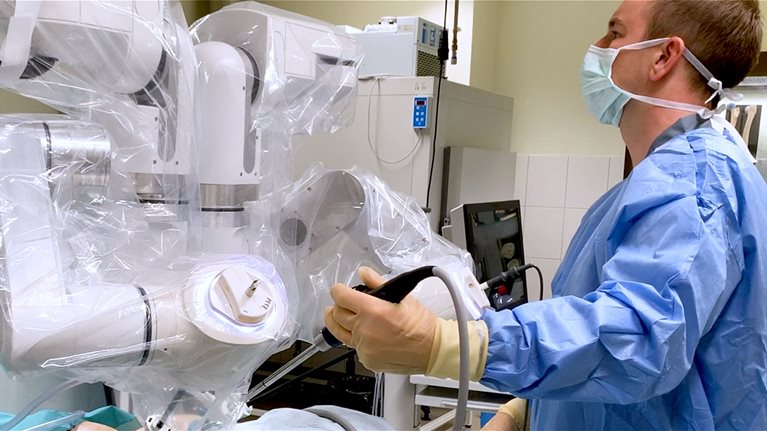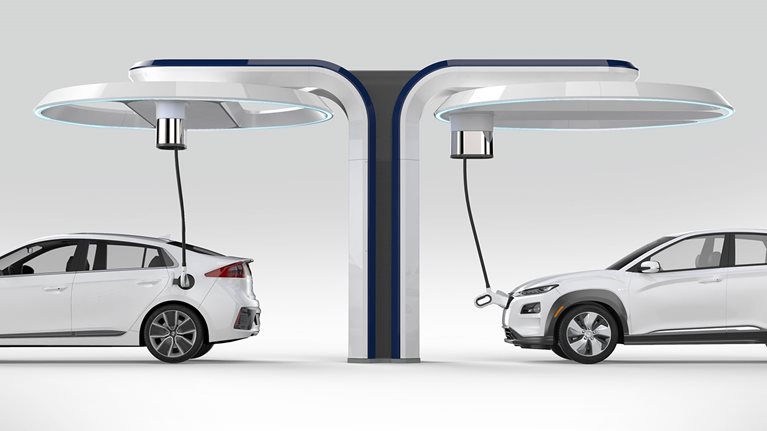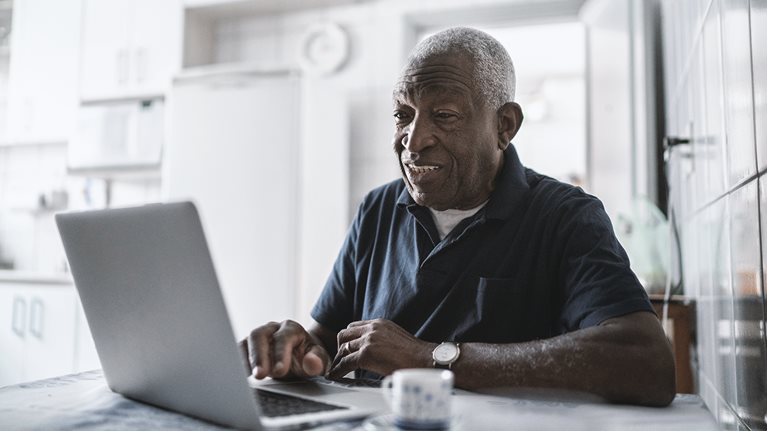Welding is hot, dangerous, and dirty work. Welders spend long hours on their feet and often work outside: on bridges, at race tracks, in oil fields, and other sites. Welding strains eyesight, the neck, and shoulders. Fumes are toxic and burns common.
For 40 years, our Sweden-based design team has collaborated first with Speedglas and then with 3M to design, and continually improve, welding helmets. With every product cycle, the joint team started from scratch, reimagining and redesigning the helmets, with innovations that sometimes shifted the entire industry.
It started in 1983 when a tiny company called Speedglas invented a new type of welding glass. It darkened automatically in response to the bright light of a welding arc, freeing welders from having to constantly “nod” the shield up and down as they worked.
Other innovations over the years included a device that pivots the shield up and back over the crown of the head, rather than resting at the forehead, easing neck pain. Internal padding that skirted pressure points, reducing headaches. A two-way fan system that improved breathability. A textile covering that captured stray glass crystals. A curved design for glass that extended peripheral vision.
Our partnership has produced seven signature helmet designs, with accessories, which have won 11 international awards, including a 2021 “Best of the Best” Red Dot Award, and are now sold in 60+ countries. But most importantly, our work together has helped to protect welders around the world.
Our North Star
How do you sustain a 40-year partnership and reinvent the same product in fresh, new ways, again and again?
“From our first contact in the mid-80s, we realized that if we worked together we could do something exceptional for our end users: the welders,” reflects Anders Grönberg , the global portfolio leader of welding at 3M. An engineer and market economist by training, Anders has led the development of the helmets for 25+ years, since joining Speedglas in 1990, and then moving on to 3M when it bought the company in 2004. “This has been our common interest during all these years: That we fulfill their needs today and in the future. The fact that we have been successful has, of course, also strengthened the relationship.”
When Speedglas was first invented, industries in Sweden were advanced when it came to personal protective equipment. “Organizations were very keen to take care of their users,” recalls Anders. “We got a lot of suggestions and improvements from welders. We took notes with paper and pen and would go back to the office, share the information, and it would grow from there.”
“Our North Star has always been to do the research where the welders are most comfortable: at his or her welding bench,” explains Oskar Juhlin , a McKinsey Design alumnus who led the helmet design work from 1983 to 2019. “If you bring someone into a design workshop, office, or other synthetic area, they won’t be as straightforward as they would be in their own environment. We also welded in our own studios, so we could test out the designs ourselves.”
Design matters
We had to teach people how to have a discussion about design.
Early on, it was a challenge to talk to welders about design; at the time it was typically understood to be a field concerned with aesthetics alone. “One guy told me ‘I don’t care about how it looks, as long as I like it,’” he remembers. “Many welders work on race cars. Well it was a different story when I said, ‘So it doesn’t matter what wheels you put on your car?’ Yes, it does! So, then design is important? We had to teach people how to have a discussion about design.”
Over time, the customer base grew to include countries in Asia and the US, where customers were very interested in the helmet technologies and had ideas for improvements. “There were more regulatory requirements to fulfil, so user research expanded into a more formal system,” recalls Anders. “We also realized we had to look beyond the current moment and anticipate the welders’ future needs.”
Today, a product road map guides the design planning from three to five years out, with the goal of introducing a new helmet model every two years. “The cycles are getting shorter as the technology is changing more quickly,” says Anders.
How we work
The typical product cycle begins with the R&D team at 3M presenting the newest technical capabilities to three our four McKinsey industrial designers. Many have worked together for years. The designers will have a wish list of what they’d like it to look like, as well as new materials, textiles, and fabrics to consider.
“You design the helmet with several design concepts, on paper, in computer, foam and clay models, exploring different shapes and trying out materials,” explains Emelie Hedén Edlund , a design director who specializes in color, materials, and finish—or CMF, as it’s known—and worked on the later models. “You touch it, feel it, and then you go back to the computer again. There is a lot of back-and-forth between digital and physical hands-on testing.”
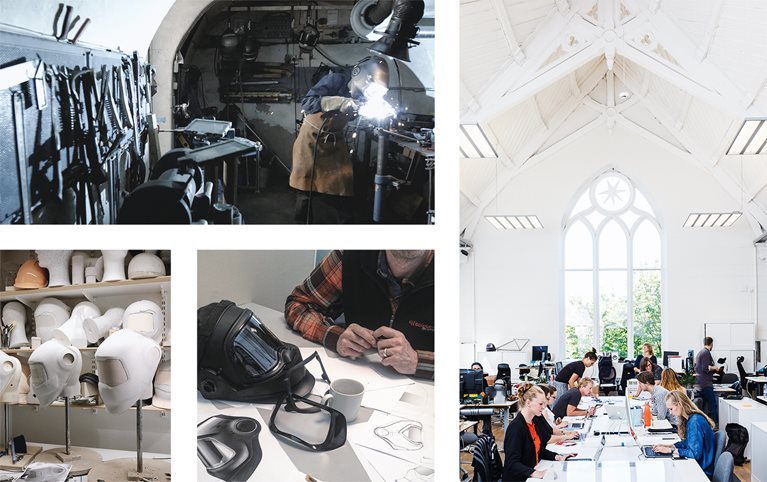
The design studio is located in a large converted missionary church in Stockholm, with workshops for sewing, foam and wood working, metal working, and welding. As the design phase unfolds, the joint teams meet in a series of workshops, sitting together for one or two days testing out new prototypes, splitting up to work separately and do homework, and then coming back together to validate new iterations. Then they go to the welders to try out the prototypes and confirm they are moving in the right direction. If so, they go on to the next stage: the critical step of ensuring that the helmet model can be manufactured in high volumes.
Hans Nyström , associate design director at McKinsey, recalls one inspiring meeting. “The extended 3M team and our designers were at the table, discussing a very complicated prototype. And it was clear that it weighed too much. No one wanted to raise their hand and say ‘it’s my work that’s causing this.’” On the spur of the moment, the McKinsey team proposed a workshop: to get tools and drills out, then and there, and find ways to cut the weight. Together the entire team looked at every component—drill a hole here, nip away material there. They lost ounces.
“From that experience, we all saw a better way of working. By sharing the common goal, it changed the whole mindset of the team,” Emelie said. “It doesn’t feel like a client relationship, but like a partnership.”
“It feels good to work with a partner who has so much trust,” says Hans. “3M has an appreciation of good design—we share that as a starting point. We complement each other skill-wise. They have the deep technical and mechanical expertise while we focus on the design and exterior surfaces. We are on the same software systems, so it’s a seamless integrated workflow. Together we share a wealth of knowledge.”
Giving emotional resonance to a functional object
Over the years, our designers have drawn inspiration from a wide range of sources including medieval knights, superheroes, ergonomics, and Chinese acupressure.
But for many, the helmet model closest to their hearts is the 9000 launched in 1996. It was the first time user research had been incorporated into every step, and it was a major departure in design. The shape of the helmet morphed from a square mailbox into a mask that felt more like a natural extension of the wearer’s face.
“The design team had a lot of discussions with the welders about the emotional aspects or character we wanted to express,” explains Hans. “It had to be very professional, powerful. Welders are very proud of their work–just think of the image of Rosie the Riveter, who was a welder. This was the heritage of the profession. If it were in a movie, the helmet would have to be fit for a hero knight on a black dragon.”
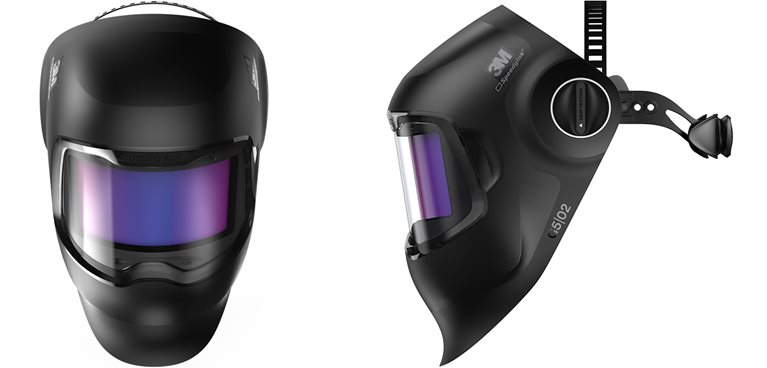
Designers introduced a ridge down the middle of the helmet face to suggest the look of armor and expressed trust through open forehead lines and other facial nuances. The ‘line of sight’ is angled downward, focused on the hands—the work. This model also incorporated the ability to exhale through side vents.
“At the time, they were actually put on mannequins in the windows of one of Stockholm’s finest department stores as a fashion item because they looked so cool,” recalls Emelie. “They went from being a very functional object to having an emotional element.”
The helmet would be cited as an example of ‘futuristic’ design for the next ten years.
After it was launched in 1996, the strikingly futuristic 3M Speedglas 9000 helmet was displayed on mannequins in the department store Nordiska Kompaniet in Stockholm.
Breathing easier
Three years later, the team introduced the Speedglas Adflo, an air-purifying respirator that circulated air to reduce heat and improve breathability. It was a fan attachment that fit snugly down the welder’s body, fastened with a belt at the waist. This tight profile reduced the risk of the welder getting snagged on the equipment.
“It was a revolutionary change,” said Oskar. “All of the other fans on the market had a round filter attached to the back which looked like a mushroom. By 2014, we went to a trade show, and every fan on market had this tight, streamlined look—our design had moved the market.”
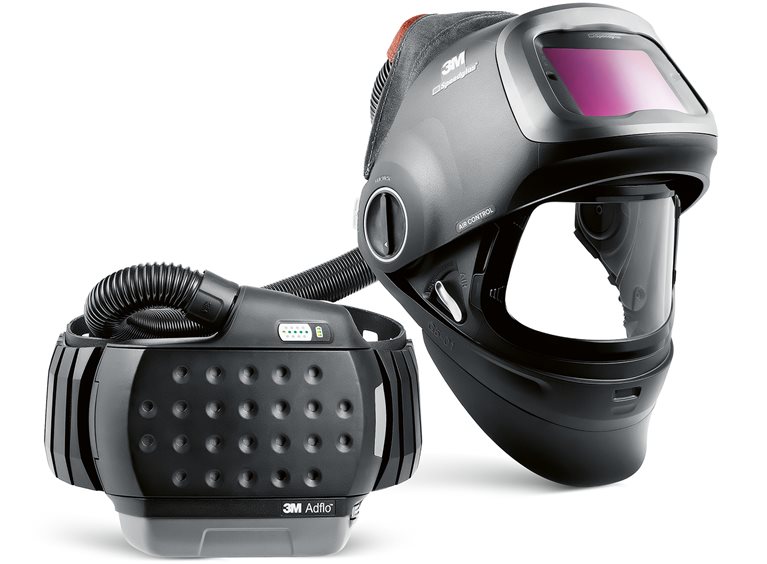
Last year, 3M launched the G5-02 for highly precise TIG welding. The helmet holds the world’s first curved glass shield, a design that follows the shape of a user’s head and opens up the full range of their peripheral vision. This year, it won the Red Dot award with a Best of the Best distinction.
Looking ahead, Oskar predicts: “The helmets will become almost like a second skin, with softer, high-tech materials rather than hard plastic which is bulky, uncomfortable, noisy. Shields are already connected to blue tooth so you can maneuver equipment with a phone; there will be developments with cameras and video, and radar may be used for detecting the target, rather than light.”
The evening news
While the awards and external praise are gratifying, some of the most satisfying recognition has come from welders themselves.
“We have had many, many stories, but there are a couple that are more famous within 3M,” Anders says. “We had a welder here in Sweden who we were visiting at his work site. We had just introduced the respiratory protection together with the helmet. After a moment’s thought, he said that he liked the helmet now because he could actually watch the late news on television. Before he began using the respirator, he was so tired that he would fall asleep before the news had started. That was an indication to us that the product that we had supplied to the market was actually helping to improve our users’ quality of life. It is a huge motivation for all of the people in our company to continue working with this kind of product.”
For Oskar, the ultimate recognition came with the futuristic 9100 series. “Some welders tattooed themselves with images of that shield,” says Oskar. “That says something about our design.”
